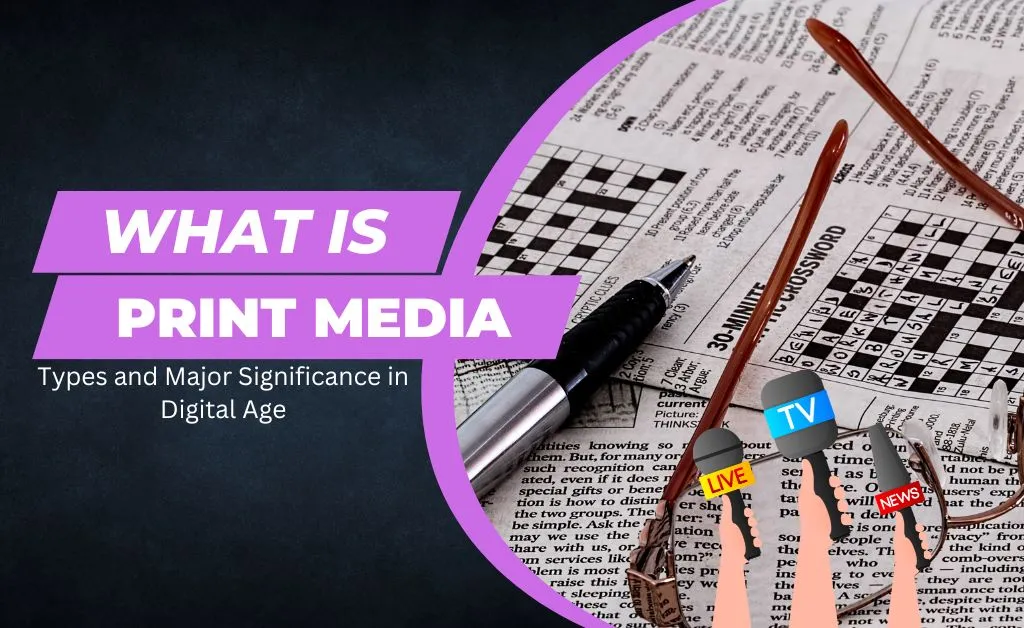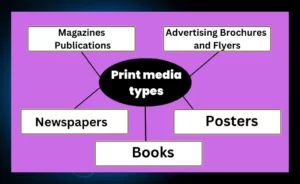What is print media? Discuss its types and importance

Print media refers to forms of mass communication that are printed and distributed, typically on paper. Print media has a long history and has been a traditional means of disseminating information to the public. Over time, various types of print media have evolved, each serving different purposes and audiences.
Here are some types of print media and their importance:

Types of Print Media:
-
Newspapers:
- Description: Newspapers are periodicals that provide news, information, and feature articles on a wide range of topics. They are usually published daily, weekly, or monthly.
- Importance: Newspapers have long been a primary source of news and information. They offer in-depth coverage, editorials, and analysis, serving as a valuable resource for staying informed about local, national, and international events.
-
Magazines:
- Description: Magazines are periodicals that cover specific topics of interest, such as fashion, lifestyle, health, or hobbies. They are often published on a weekly or monthly basis.
- Importance: Magazines cater to niche audiences and provide specialized content. They offer in-depth articles, interviews, and high-quality visuals, making them a preferred choice for those seeking detailed information on specific subjects.
-
Books:
- Description: Books are long-form written works that cover a wide range of genres and subjects. They can be fiction or non-fiction and are typically bound with a cover.
- Importance: Books are a fundamental form of print media, offering comprehensive exploration of ideas, stories, and knowledge. They serve as enduring sources of information, entertainment, and education.
-
Brochures and Pamphlets:
- Description: Brochures and pamphlets are promotional materials with concise information, often used for advertising, marketing, or educational purposes. They are usually distributed in physical or digital form.
- Importance: Brochures and pamphlets are effective for conveying specific information in a visually appealing manner. They are commonly used in business, tourism, healthcare, and education.
-
Newsletters:
- Description: Newsletters are periodic publications containing updates, announcements, and articles on specific topics. They can be produced by businesses, organizations, or community groups.
- Importance: Newsletters serve as a direct communication tool, keeping stakeholders informed about developments, events, and updates within a particular community, organization, or industry.
Importance of Print Media:

-
Credibility and Trust:
- Print media, especially newspapers, has historically been seen as a credible and trustworthy source of information. Established publications with a reputation for accuracy and reliability can build trust with their readers.
-
In-Depth Analysis:
- Print media, such as newspapers and magazines, often provides in-depth analysis and feature articles that go beyond the headlines. This allows readers to gain a deeper understanding of complex issues.
-
Tactile Experience:
- Print media provides a tangible and tactile reading experience. The physicality of printed materials, such as books and newspapers, can be more immersive and enjoyable for some individuals.
-
Archival Value:
- Printed materials, especially books, have lasting archival value. They contribute to the preservation of knowledge and cultural heritage, providing a resource for future generations.
-
Targeted Advertising:
- Print media allows for targeted advertising through specific publications that cater to niche audiences. Advertisers can reach a defined demographic, making their campaigns more effective.
-
Local and Community Focus:
- Local newspapers and community publications play a vital role in covering news and events at the grassroots level. They foster a sense of community and keep residents informed about local issues.
-
Accessibility:
- Print media has historically been accessible to a wide audience, providing information to those who may not have access to digital technologies or the internet.
-
Complementary to Digital Media:
- Print media can complement digital media, offering an alternative reading experience. Many publications have both print and online versions, providing flexibility for readers.
While the landscape of media consumption is changing with the rise of digital platforms, print media continues to hold a significant place in the media industry, offering unique advantages and serving diverse audience preferences.
Thank you.

